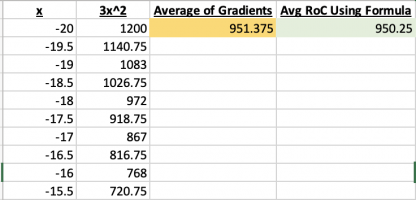Cambridge101
New member
- Joined
- Dec 16, 2021
- Messages
- 49
I am coming across a lot of labels like find the 'average gradient', but what do they mean by average in this context, it seems like a crap way to say it. For me, the idea behind finding the gradient of a chord on a curve when starting calculus and differentiation is to get close, or better to approximate the gradient of the curve. Because if you try to understand it by thinking about the average as it is defined in stats, (re distributing an amount until each group is equal). It does not make sense in terms of 'average gradient'.
Why does finding the gradient on the chord give us 'average gradient' - how do you guys think about it?
Why does finding the gradient on the chord give us 'average gradient' - how do you guys think about it?

